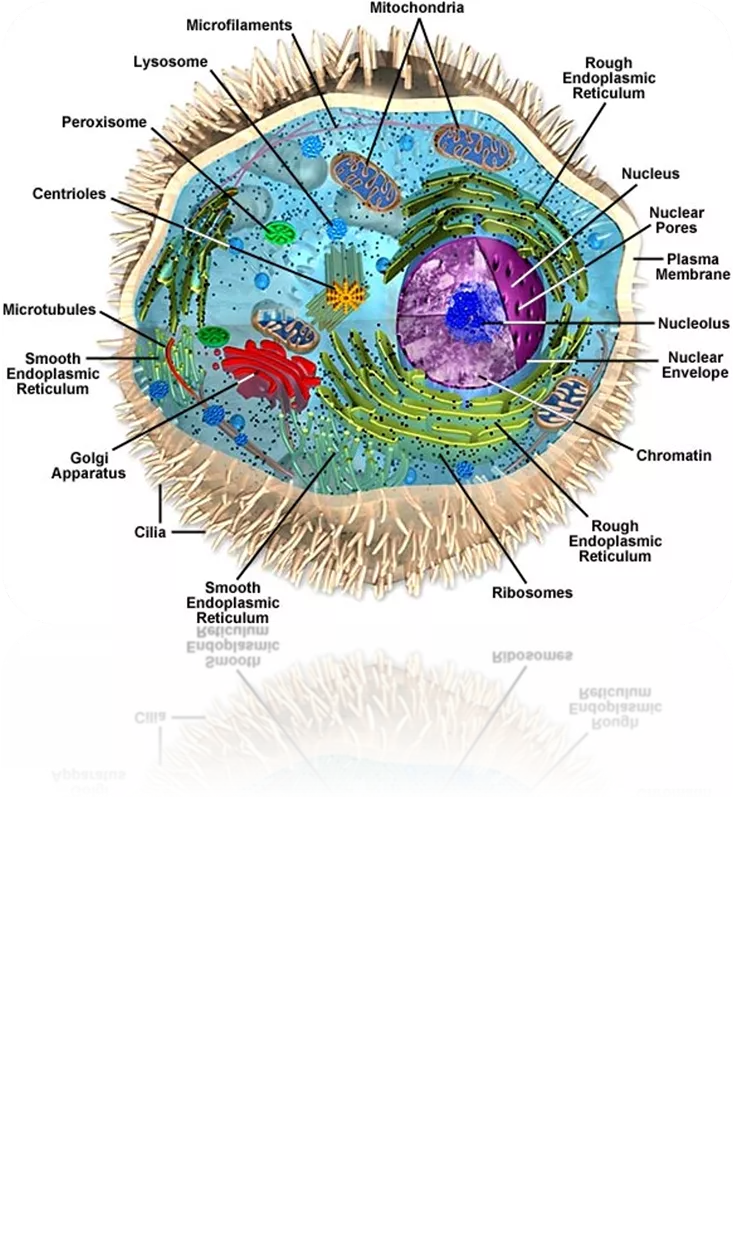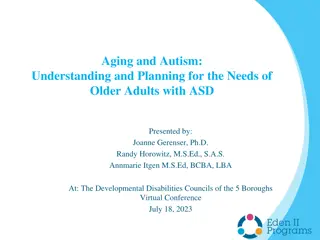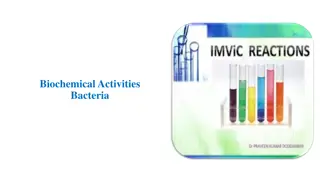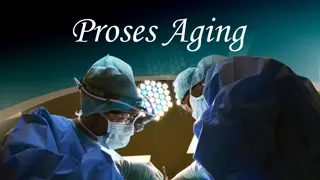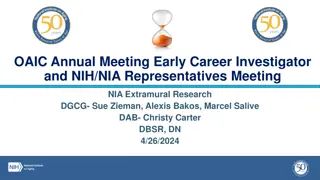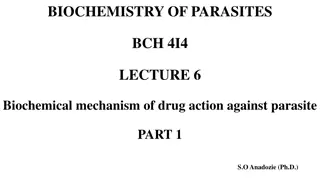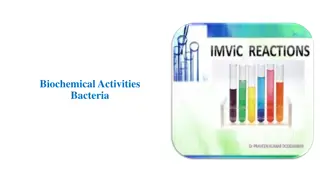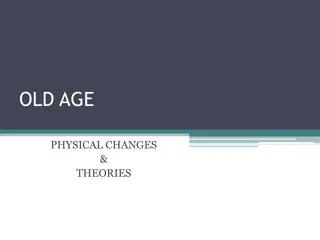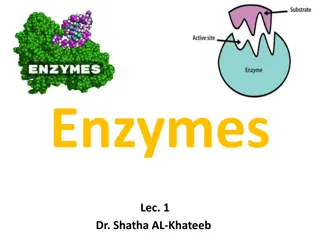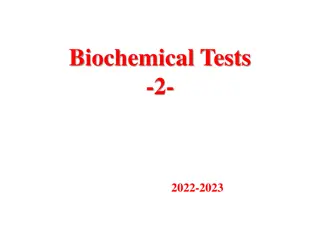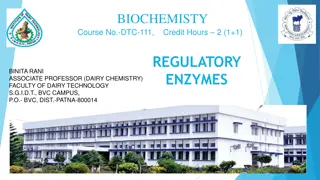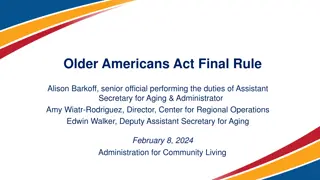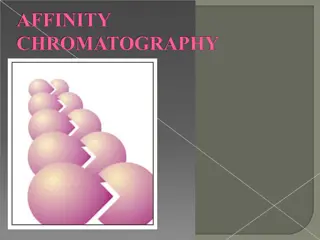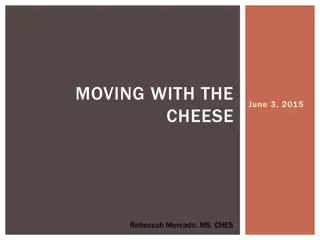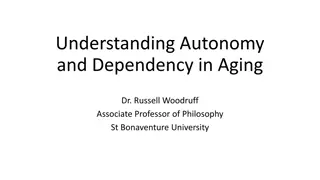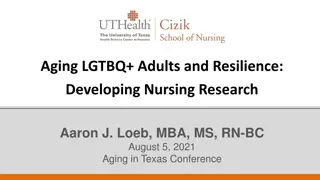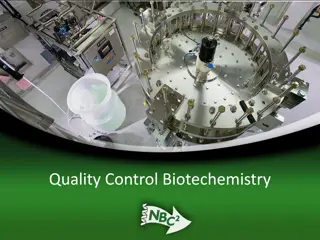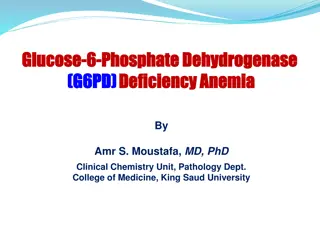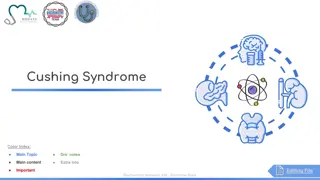Aging Process from a Biochemical Perspective
Biochemistry and Molecular Biology play crucial roles in understanding the aging process, focusing on the biochemical basis of life, the basis of health, major causes of diseases, and theories of aging. Aging is described as the accumulation of damage due to reactive oxygen species, with theories encompassing genetic, metabolic, and epigenetic perspectives. The discussion also includes evolutionary theories on aging mechanisms and reasons for the aging process.
Download Presentation

Please find below an Image/Link to download the presentation.
The content on the website is provided AS IS for your information and personal use only. It may not be sold, licensed, or shared on other websites without obtaining consent from the author.If you encounter any issues during the download, it is possible that the publisher has removed the file from their server.
You are allowed to download the files provided on this website for personal or commercial use, subject to the condition that they are used lawfully. All files are the property of their respective owners.
The content on the website is provided AS IS for your information and personal use only. It may not be sold, licensed, or shared on other websites without obtaining consent from the author.
E N D
Presentation Transcript
Biochemistry and Molecular Biochemistry and Molecular Biology related to Aging Process Biology related to Aging Process By: Taufiq RN
Biochemistry Biochemistry Definition: The science of chemical basis of life Cell is the structural unit in living system The science of the chemical constituent of living cells and of the reactions and process they undergo
The Basis of Health The Basis of Health The basis of health is the normal biochemical process in the body Health definition in the view point of biochemisty is: The situation in which all of many thousands of intra- extra cellular reactions that occur in the body are proceeding at rate commensurate with the organism maximal survival in physiologic state All diseses are manifestations of abnormalities of molecules, chemical reactions, or biochemical process
The Major Causes of Disesases The Major Causes of Disesases 1. Physical agent: mechanical trauma, radiation etc 2. Chemical agent: drugs etc 3. Biologic agent: virus, bacteria, fungi, parasites 4. Oxygen lack: loss of blood supply, etc 5. Genetic disorders: congenital, mulecular 6. Immunologic reactions: autoimmune disesases 7. Nutritional imbalances: deficiencies, excesses 8. Endocrine imbalances: hormonal deficiencies, excesses
Aging is the consequence of the accumulation of damage by deleterious oxidation in bimolecular caused by the high reactivity of the ROS produced in cells as a result of the necessary use of oxygen. (Fuente MD et al, Current PharmaceuticalDesign 09)
Theory of Aging Genetic theory: Aging is the result of a purposeful program driven by the genes. Hay flick phenomenon Telomer shortening Metabolic theories: (aging can be considered "a side effect" of aerobic metabolism: "wear- and tear , damage by free radicals, mitochondrial injury) Epigenetic theory: Aging is the result of random events from environment, not genetically programmed. Theory of aging can be classified into 3 groups Evolution theory: Does not try to explain the mechanism of aging, but instead attempt to explain why the aging process occurs Prevent organisms competing with their progeny for food and space.
Catabolism of Proteins, Fats, and Carbohydrates Amino acids Fatty acids Glucose e Pyruvate Pyr deh comp e CO2 Acetyl Co A H2 O oxaloacetate Cytrate Respiratory chain NADH FADH Krebs cycle e 2H+ + O2 e ADP + Pi ATP CO2 e CO2 e Oxidative phosphorilation
Superoxide is the primary form of oxidant within Cells Superoxide anion (O2-) is primarily form of oxidant by products produced in the body as a consequence of normal aerobic metabolism. O2- -can then be converted directly or indirectly to secondary ROS such as: . . OH, ROO. . , H2O2. Electrochemical protone gradient (Kefer JC, et al. 2009)
Aging Process Telomere; Hay-flick Phenomenon The fundamental tenets of the free radical theory of aging are: The rate of mitochondrial oxygen radical generation The degree of membrane fatty acid unsaturation The oxidative damage to mtDNA are lower in the long- lived than inthe short-lived species Free radical and oxidation mitochondri al theory Fetal life Life style Environmental Factors (75%) Gen (25%) Adult life Aging Intrinsic ROS Homeostasis Extrinsic ROS Health Immune System (Pamplona R, Barja G, 2000). Longevity (Fuente MD et al, CPD 09)
Oxidation-Inflammation-Aging AGING Nervous System O Chronic Oxidative Stress Impaired homeostasis + Endocrine System A Immune System Morbidity Mortality Mitochondrial damage on post mitotic cells + Immuno senescence - + - Lymphocyte functions Phagocyte functions Phagocyte functions Acquired Immune Innate Immunity Inflammatory stress - - A Vicious circle ROS/RNS p Pro-inflammatory compound (NF B over expression) Improve Homeostasis - Antioxidants Life style Environments More and better Longevity
Sasaran Belajar Memahami: 1. Structures & Functions of Cells in the viewpoint of Biochemistry - Cell Biology (structures & function) - Molecular biology (energy metabolism, hormone, nutrient) - Molecular genetic (gen & epigen) 2. Bioenergetics & metabolism - The role of ATP 3. Structure, function, & replication of informational macromolecule (Nucleitide, DNA, RNA etc) - DNA organization, replication, repair - Protein synthesis, processing, modification - Genetic code & regulation of gen expression - Recombinant DNA 4. Hormonal & cellular communication - Celular comunication - The diversity of the endocrine system - Hormone action & signal transduction 5. Micronutrient, Free Radicals, and Antioxidant Nutrients - Vitamin & mineral - Free radical anti oxidant - Xenobiotic metabolism Biochemistry and basic molecular biology
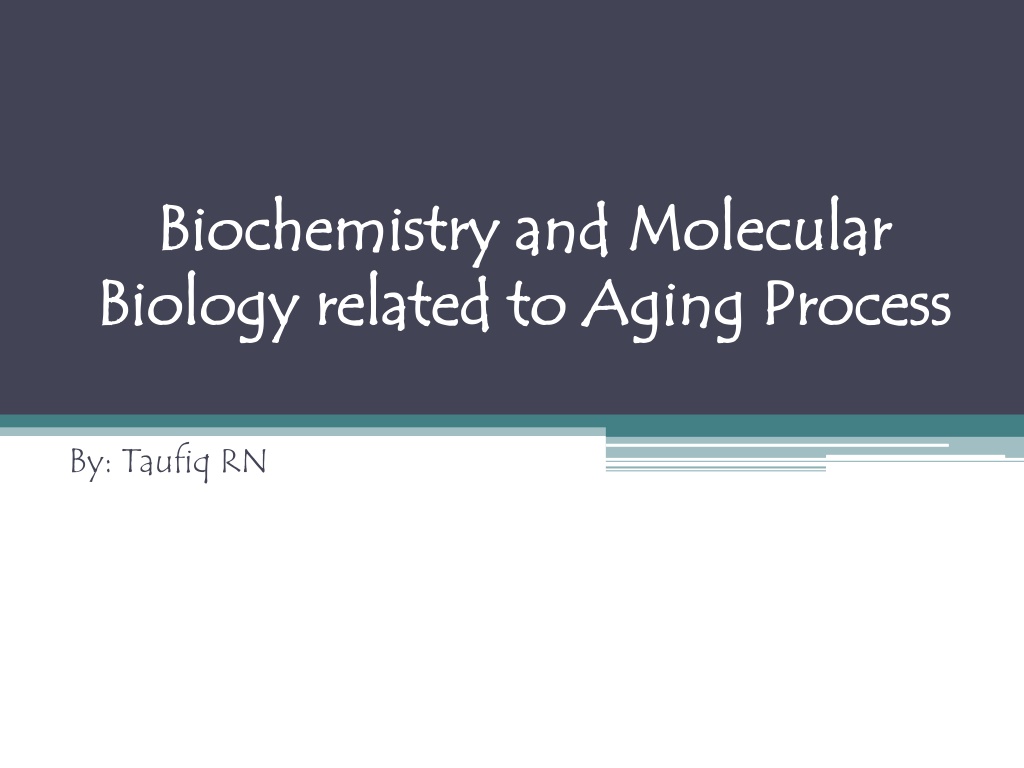
 undefined
undefined
























